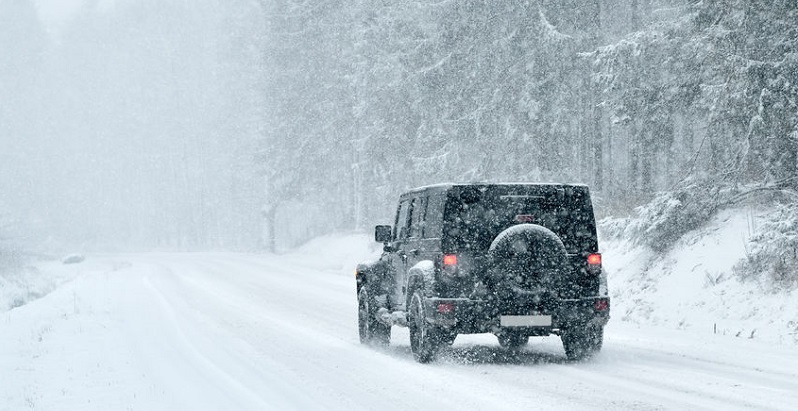When Colorado winter weather reduces visibility, driving faster than you can see ahead and safely stop can cause a chain-reaction car accident.
What You Do Now Can Help Prevent Chain-Reaction Accidents
Winter is coming, Coloradans. You can feel it with each cool breeze. It’s time to prepare for the sort of icy cold that intimidates lesser men and women from warmer climes and lower elevations. This is what you signed up for: Rocky Mountain cold and the dangers that come with it.
Your car or truck, though, can’t do it on its own. You’ll need to take some steps to prepare it for the cold. The Colorado Department of Transportation and other authorities are providing some tips to help you both make it through the season.
CDOT’s maintenance director Kyle Lester, quoted by The Prowers Journal of Lamar, said:
“Just as we get ready for the winter months ahead, we’re recommending that drivers do the same, such as ensuring their vehicle is properly winterized, including making sure that they have adequate tread on their tires or have good snow tires. … We’re also reminding the traveling public to give our plows plenty of room and not pass them on the right so they can safely clear the highway.”
Advice From Colorado’s Road Authority
Here are CDOT’s top tips for winter driving:
- Be aware that in severe conditions authorities may implement the state’s traction and passenger vehicle chain laws. Road markers will clearly indicate when.
- The traction law requires vehicles without 4-wheel-drive to be equipped with tires rated for snow or mud conditions. All tires need at least 1/8-inch treads.
- The passenger vehicle chain law, when invoked, requires every car or truck to have chains or another traction-enhancing device such as AutoSock. Violators face fines of $130 for improper equipment, or more than $650 if your vehicle becomes stuck and blocks a roadway.
- Check your tire treads. Hold a quarter in the groove between your tire treads. If you can see the top of George Washington’s head, you need new tires. Test multiple spots to be sure.
- Be aware of road closures. Travelers can receive advisories by calling 511 from anywhere in Colorado, or by logging into several web pages: http://www.cotrip.org, CDOT’s general advisory website; http://www.codot.gov, which lets visitors sign up for e-mail and text alerts on road conditions; http://goi70.com for additional information on Interstate 70 and the West Mountain Corridor; and http://www.coloradodot.info/travel/winter-driving, CDOT’s Winter Driving web page, offering road conditions and winter driving tips.
- Keep your gas tank full. The extra weight can give better traction, and you are less likely to run out of fuel if you get stuck in deep snow.
- If you do get stuck in a snowstorm, do not leave the shelter of your car. Wait for help, running the engine periodically to stay warm.
- Carry blankets, water, a flashlight, a shovel, and food such as granola bars.
- Keep a couple of bags of sand in your trunk in case you get stuck and need some extra traction. Remember your jumper cables, an ice scraper, and de-icer for your car locks.
- Adjust your driving to match conditions. When visibility is poor or even a total whiteout, drive no faster than you can see ahead and safely stop. Low visibility and high speeds equal chain-reaction car accidents.
Advice From the Tech Savvy
New technology magazine Digital Trends offers some additional tips to keep you safe, warm and mobile:
If at all possible, keep your car or truck in a garage or under cover, even just a fitted tarp from an auto parts store can help you avoid the morning routine of scraping your windows (which if done improperly can be a big hazard). Warmth will help you start your car in the morning. Remember to wash off road salt before it corrodes your exterior.
Have your battery checked, and if it’s at less than 100 percent capacity, consider buying a new one. Low temperatures can reduce a battery’s power by 50 percent. Keep your battery terminals clean.
Have your car inspected by a mechanic and make sure everything is in working order. Your car’s systems, such as your radiator and brakes, need to be in great shape if they’re going to keep you secure. Tanks of fluids, such as oil, antifreeze, and brake fluid, should be full.
Wiper blades are important enough to deserve their own tip here. Icy windshields tear up rubber blades quickly, while new blades are cheap and easy to install.

